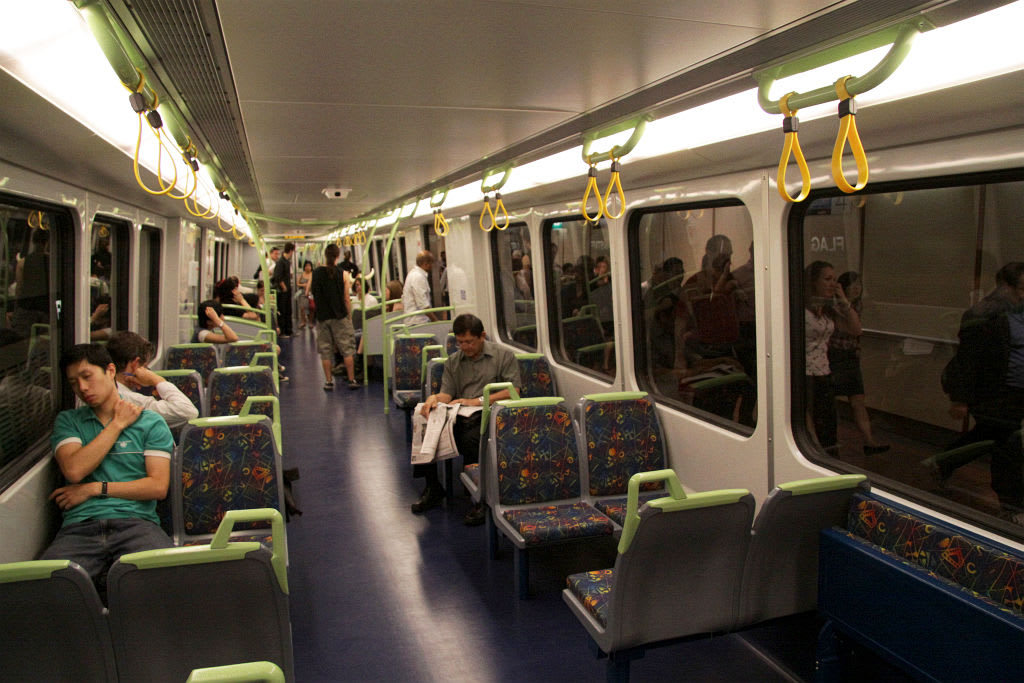Melbourne's train fleet to be expanded
On Monday 29th of June, the Minister of Public Transport, Jacinta Allan, and Minister for Industry, Lily D'Ambrosio, called for expressions of interest for the design, construction and maintenance of a 'next generation, high-capacity metro train' (HCMT) for Melbourne.
Foreshadowed in the recent Andrews' Government budget, 37 new trains along with the building of a new maintenance centre in Pakenham East is expected to cost $1.3 billion.
A Railway Gazette article states that on top of the order for 37 new trains for the Pakenham/Cranbourne lines, the State Government seeks to have the right over 25 purchase options for the Melbourne Metro Rail project and a further 38 options to begin phasing out the 1980s era Comeng trains.
Sweating more out of the platform space
The station platforms on Melbourne's rail network - those on the surface, measurable by Google Maps - are around 160 metres and according to the Railway Gazette article the new high capacity metro trains look set to take full advantage of the existing infrastructure.
Not since the 1970s when the Harris trains were primary workhorse of the rail fleet has there been any train marshaled in a configuration of more than 6 carriages. The recently departed Hitachi and the current fleet of Comeng, X'Trapolis and Siemens trains have all been marshaled as 3 or 6 x 23-24m motor and trailer carriage trains measuring a total length of 71-72 metres for 3 car trains or 143-144 metres for 2 x 3 car sets which are now the standard configuration across all lines.
At 160m it would appear the next generation of trains to run exclusively on the Cranbourne/Pakenham lines would likely be marshaled in a 8 x 20m carriage configuration (or 7 x 22-23m configuration as pointed out in Daniel Bowen's blog) thus utilising the full length of the existing platforms at stations along those lines.
Piece by piece
If there is any communications-related criticism to be levelled at the current State Government, it's that the piecemeal approach they have taken by drip-feeding announcements related to their huge book of Public Transport projects doesn't link back to the overall 'big picture' narrative.
Nevertheless, the table below is an attempt to at least put projects in some logical order and it's based on information that has previously been released as well as some assumptions denoted by an asterisk.
| Puzzle piece | Date |
|---|---|
| Sunbury line level crossings removed - Main Road and Furlong Road in St Albans | 2017 |
| Dandenong corridor level crossing removal project complete - 9 level crossings and 4 rebuilt stations | 2018* |
| First next generation HCMTs start rolling off the production line | 2018 |
| Melbourne Metro Rail project - start of civil works | 2018 |
| Trial of new signalling system begins on Sandringham Line | 2019-2021* |
| State Government exercises HMCT purchase options for Melbourne Metro Rail | 2020-2021* |
| First batch of HCMTs nears end of production cycle | 2022 |
| Melbourne Metro Rail project - civil works and station construction complete, rail equipment installation and testing begins | 2022-2023* |
| Second batch of HCMTs for the Melbourne Metro Rail / Sunbury line starts production cycle | 2022* |
| Pakenham, Cranbourne and Sunbury lines retrofitted with new signalling system | 2024-2025* |
| Second batch of HCMTs for the Melbourne Metro Rail / Sunbury line nears end of production cycle | 2024-2025* |
| Melbourne Metro Rail project - Pakenham/Cranbourne services begin running through to Sunbury and vice versa | 2024-2025* |
Wouldn't it be nice…
If the State Government took a leaf out of the NBNCo's book and centralised all public transport project information - big picture and fine detail - in one giant map?
Lead image credit: Wikipedia.
